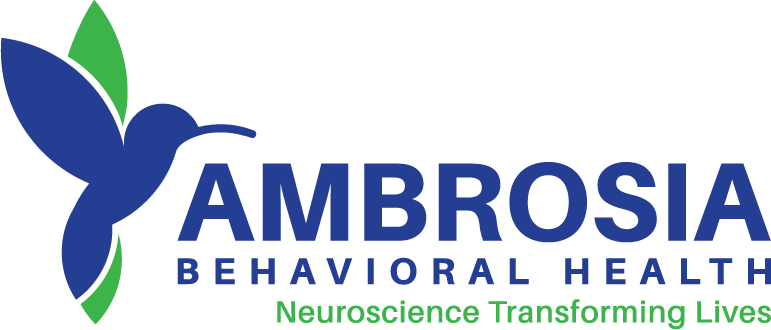Cocaine
Most people start using a drug like cocaine in a party setting or to get an extra boost to finish up work. After the first “bump” or “line” of cocaine, many feel the need to continue doing more to sustain their energy.
Regular use of cocaine eventually leads to higher tolerance, when individuals must use more of the substance to get the same feeling they originally had. The mental obsession to use develops quickly into a full-fledged addiction, making cocaine and crack some of the most dangerous drugs in existence. Ambrosia Treatment Center located in South Florida offers drug rehab programs, specializing in treating cocaine addiction.
Street Names
Blow, Bump, C, Candy, Fishscale, Coke, Crack, Hard, Rock & BaseCommon Forms
White powder or Whitish Rock CrystalCommon Ways Taken
Snorted, Smoked or InjectedHealth Effects of Cocaine Abuse
When cocaine is combined with other drugs (poly-drug use), the complications can be far more severe. Cocaine is a potent central nervous system stimulant that produces short-term euphoria, energy and rapid speech in addition to dangerous physical effects like rapid heartbeat and high blood pressure.
- Dilates pupils
- Increases body temperature & blood pressure
- Constricts blood vessels
- Increases heart rate
- Decreases appetite
- Causes loss smell
- Gangrene
- HIV infections
- Stroke
- Heart attack (cardiac arrest)
- Nosebleeds
- Irritability, restlessness & anxiety
- Paranoia/Psychosis
- Overdose
- Death
The Cycle of Cocaine Addiction
Like any drug, the tolerance for cocaine gradually builds after repeated use, altering the user’s mood and lifestyle. After awhile, the drug takes over. Whenever they are not on cocaine, they feel the physical and mental repercussions. They feel the need to use to feel normal again. This is the beginning of the cycle of addiction. Because of the short-lived high and availability, cocaine and crack are both extremely addictive.
Withdrawal Symptoms of Cocaine
- Depression and anxiety
- Fatigue
- Difficulty concentrating
- Inability to feel pleasure
- Aches
- Pain, chills, and tremors
- Irritability
- Paranoia
- Restlessness
The Demographics of Cocaine Abuse
Studies have shown that free-base cocaine (crack) is found most in poor, minority communities within major cities, while the powder is seen in all socioeconomic statuses.
Further, 71% of all those seeking treatment for cocaine enter with additional addictions as well (poly-substance abuse).

More About Cocaine Addiction
Withdrawal from cocaine comes in three stages. The initial crash can last a few hours to a few days. During the crash, the individual will feel groggy and tired, as well as depressed and easily irritated. After that, users typically go through acute withdrawal, which is characterized by insomnia, fatigue and depression. This period lasts about two weeks. Lingering symptoms can continue for several months after stopping cocaine use. Also known as the extinction period, this is the body adjusting to regular flows of dopamine and is usually comprised of sadness, irritability and uneasiness.
Depending on the severity of their addiction, a cocaine user can be hard to spot. Typically people are very animated and lively when they are high on cocaine or crack. They usually have more energy than even the most energetic sober person, and look restless and uncomfortable when they are not using or withdrawing. Keep an eye out for mood swings, and extremes in energy level. While some people are just naturally peppy, someone on cocaine or crack is often manic and sometimes paranoid. These symptoms can look like stress or anxiety to the untrained eye but are the best indicator of a cocaine habit.
Cocaine affects the user by releasing a huge surge of dopamine in the user’s brain. This chemical is associated with the euphoric, rush type feeling cocaine provides.
Crack is a form of smokeable cocaine that is more intense as well as cheaper and easier to buy. The high is similar to the feeling of cocaine, but is shorter in duration, making it incredibly addictive and dangerous. Crack is made with cocaine and other ingredients such as baking soda or ammonia, and cooked into a “rock.”
COCAINE ADDICTION REHAB IN WEST PALM BEACH, FLORIDA
Ambrosia Treatment Center with locations in West Palm Beach, Singer Island and Port St. Lucie, Florida offers drug rehab treatment to help you or your loved one start their recovery from cocaine addiction. Take a look at our admissions process and get started right away.
After completing treatment, 12-step programs can greatly aid those who are recovering from addiction to drugs like cocaine and crack. Active involvement in these programs helps to prevent a relapse, especially in the early period of sobriety.
The first step to a lasting recovery is to call the help hotline at (866)-778-7470.








